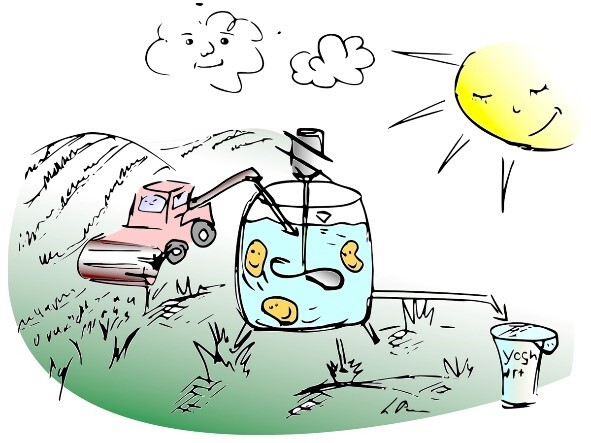Meadow yogurt without cows
Due to the ever-growing world population, the need for sustainable and climate-friendly food production is becoming increasingly urgent. The challenge lies in reducing dependence on animal products, which contribute significantly to greenhouse gas emissions, while at the same time providing sufficient protein.
To meet this dual challenge, scientists explore alternative plant-based protein sources.
From grass to yogurt
This is exactly where the GrassToGurt (G2G) project comes in, breaking new ground in food production by harnessing the potential of grassland to produce plant-based proteins. Using yeast fermented on grass clippings, it is ultimately possible to produce yogurt.
The use of yeast instead of animal milk reduces the high carbon footprint of dairy products. In the long term, this will preserve cultural and recreational landscapes characterized by grassland as well as regional agriculture independent of livestock farming. The aim of G2G is to produce yeast-based yogurt with properties similar to its animal-based counterpart.
The role of ITAS in the development of meadow yogurt
“ITAS contributes to the development of technological alternatives to traditional dairy products,” says Christine Rösch, G2G project manager at ITAS. “In this way, it can help reduce greenhouse gases and promote a healthier and more ethical diet.”
The ITAS team uses advanced geospatial data modeling to identify areas that are suitable for repurposing to produce yogurt without cow’s milk. Another task of ITAS is to analyze consumer attitudes toward G2G yogurt. The focus is on identifying the most important factors that influence food purchases, such as taste, values, habits, and affordability. (26.05.2025)
Further links or documents:


